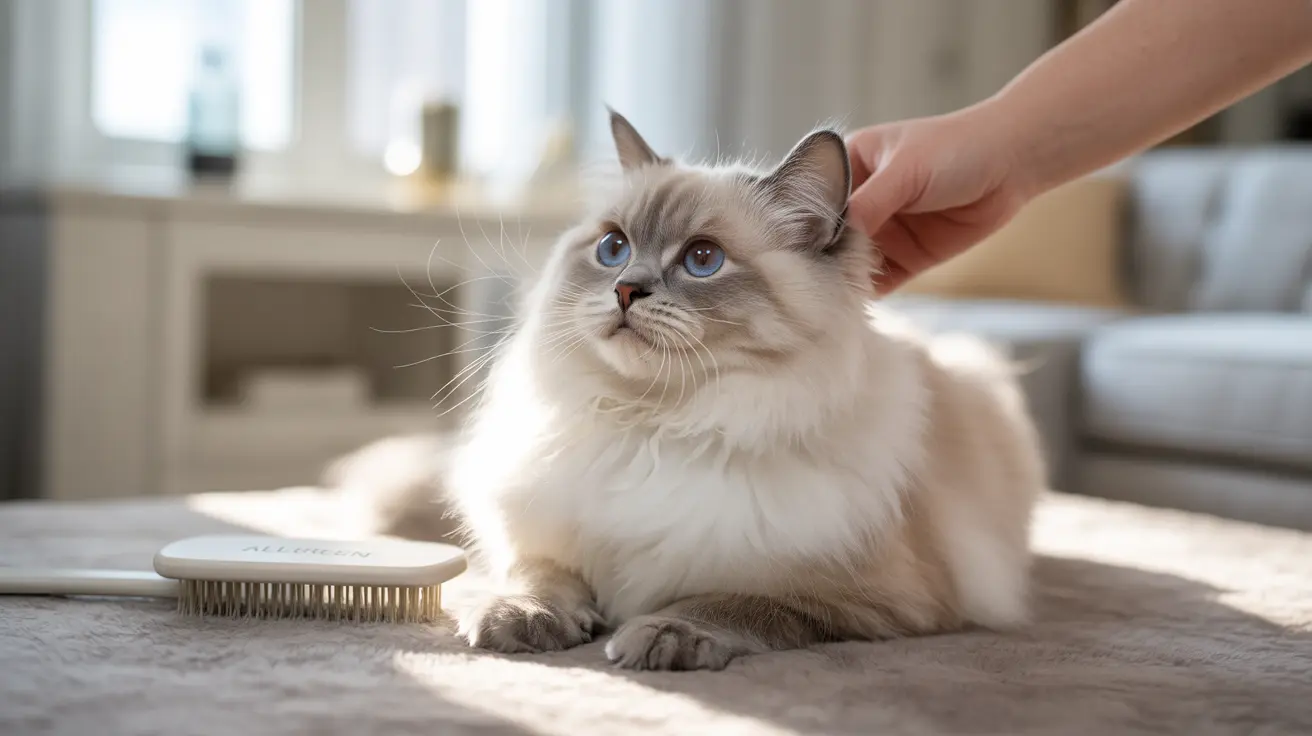For allergy sufferers seeking a feline companion, the question of whether Ragdoll cats are hypoallergenic often comes up. While these beautiful, blue-eyed cats are sometimes marketed as being allergy-friendly, it's important to understand the facts about Ragdolls and allergies before bringing one into your home.
In this comprehensive guide, we'll explore the truth about Ragdoll cats and their allergen production, helping you make an informed decision about whether this breed might be suitable for your situation.
Understanding Ragdoll Cats and Allergens
Despite popular belief, no cat breed is truly hypoallergenic, including Ragdolls. All cats produce the Fel d 1 protein - the primary allergen that triggers reactions in sensitive individuals. This protein is found in their saliva, skin cells (dander), and urine.
However, Ragdolls may have some characteristics that could make them more tolerable for some allergy sufferers compared to other breeds. Their unique coat type and grooming habits can influence allergen distribution in your home.
Why Ragdolls Might Trigger Fewer Allergies
Several factors contribute to why some people find Ragdolls more manageable from an allergy perspective:
Coat Characteristics
Ragdolls have a silky, semi-long coat without a dense undercoat. This unique fur structure might result in less shedding and dander distribution compared to cats with thick undercoats.
Grooming Habits
These cats typically spend less time self-grooming than many other breeds, which means they may spread less saliva (containing Fel d 1) through their fur during grooming sessions.
Managing Allergies with a Ragdoll Cat
Regular Grooming Routine
Implementing a consistent grooming schedule is crucial for managing allergen levels:
- Brush your Ragdoll 2-3 times weekly
- Use appropriate grooming tools designed for long-haired cats
- Consider monthly baths with pet-safe shampoo
- Pay special attention during seasonal shedding periods
Environmental Controls
Creating an allergen-controlled environment can significantly reduce reactions:
- Install HEPA air purifiers in main living areas
- Vacuum frequently with a HEPA-filter vacuum
- Wash cat bedding weekly in hot water
- Keep your bedroom as a cat-free zone
Living Successfully with a Ragdoll Despite Allergies
If you're determined to share your home with a Ragdoll cat despite having allergies, consider these practical steps:
- Spend time with a Ragdoll before committing to adoption
- Consult with an allergist about management strategies
- Start with a trial period to assess your reaction
- Be prepared to implement strict cleaning and grooming routines
Frequently Asked Questions
Are Ragdoll cats truly hypoallergenic for people with allergies?
No, Ragdoll cats are not truly hypoallergenic. While some people might experience fewer allergic reactions to Ragdolls, they still produce allergens that can trigger symptoms in sensitive individuals.
How do Ragdoll cats differ from other breeds in terms of allergen production?
Ragdolls may produce similar amounts of allergens but their unique coat characteristics and grooming habits might result in less allergen distribution throughout your home.
What are the best ways to manage cat allergies if I have a Ragdoll?
Regular grooming, maintaining a clean environment with HEPA filtration, keeping the cat out of bedrooms, and consistent cleaning routines are essential for managing allergies.
Can regular grooming and bathing reduce allergen levels in Ragdoll cats?
Yes, regular grooming and occasional bathing can help reduce loose fur and dander, potentially decreasing the amount of allergens in your environment.
What are the potential allergy symptoms I might experience with a Ragdoll cat, and how can I minimize them?
Common symptoms include sneezing, runny nose, itchy eyes, and skin reactions. Minimize them through regular cleaning, grooming, air filtration, and possibly medication prescribed by your healthcare provider.
Remember, while Ragdolls might be more tolerable for some allergy sufferers, individual reactions vary significantly. Always prioritize your health and consult with medical professionals before bringing any cat into your home if you have allergies.






